
Chest, probably Columbia County, New York, 1775. Pine. H. 18 1/4 ", W. 52 1/2 ", D. 20". (Courtesy, New York State Museum, Albany, New York.)
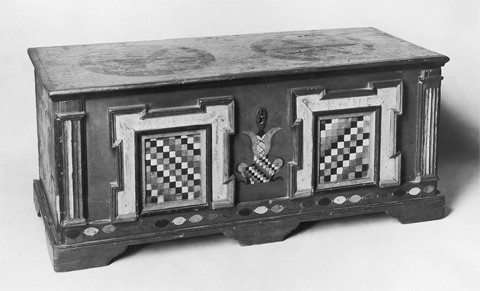
Chest, Schoharie County, New York, 1778. Pine. H. 20 1/2 ", W. 47 1/2 ", D. 21 1/2 ". (Courtesy, Metropolitan Museum of Art.)
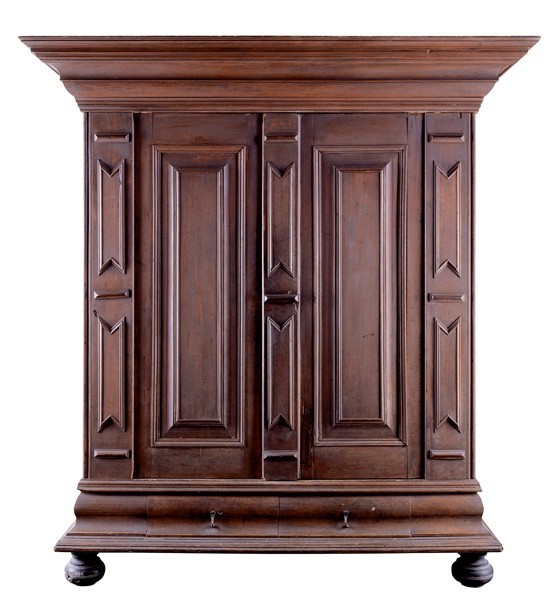
Schränk, Dutchess or Ulster County, New York, 1715-1740, Maple with white pine and yellow pine. H. 83 1/4", W. 76 3/4", D. 29". (Courtesy, Ulster County Historical Society; photo, Gavin Ashworth.)
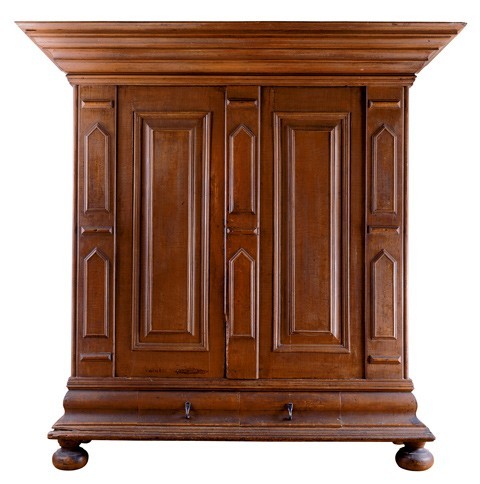
Schränk, Dutchess or Ulster County, New York, 1715-1740, Maple with white pine and yellow pine. H. 76", W. 76", D. 29 1/8". (Private collection; photo, Gavin Ashworth.) The iron drawer pulls are replacements based on the originals on the schränk illustrated in fig. 3.
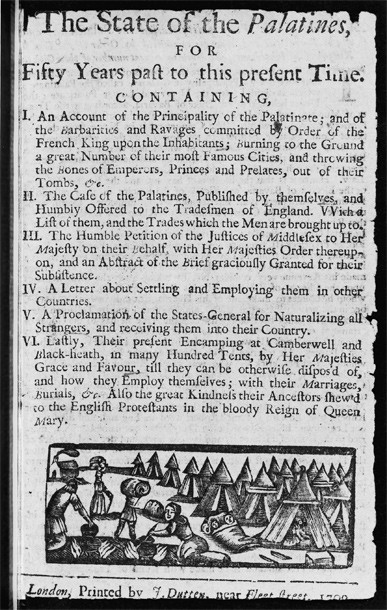
Title page from The State of the Palatines, For Fifty Years past to this present Time (1709) showing the Palatines soon after their arrival in England encamped outside London at Camberwell or Blackheath. (Courtesy, Houghton Library, Harvard University EC7.A100.709s2.)

Robert Hunter, attributed to Sir Godfrey Kneller, England, ca. 1720. Oil on canvas. 50" x 40". (Collection of the New-York Historical Society.)

Robert Livingston, attributed to Nehemiah Partridge, New York, 1718. Oil on canvas. 50" x 40". (Private collection; photo, Gavin Ashworth.) The painting is inscribed "AETAT 64 1718."
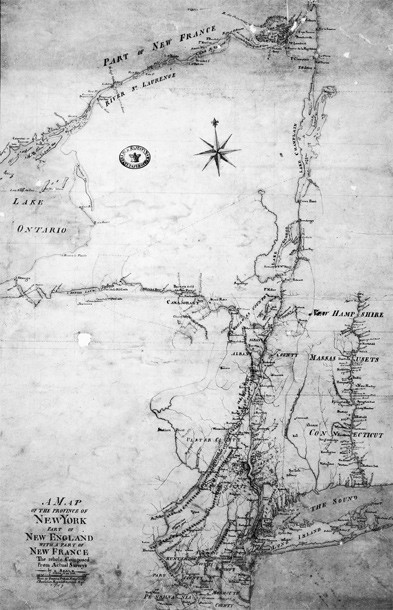
Frances Pfhister, A Map of the Province of New York, Part of New England, with Part of New France, 1759. (Courtesy, Public Records Office, London.) The area of detail shows Livingston Manor, East Camp, and Rhinebeck. The circles on the map indicate later Palatine settlements at Schoharie and Canajoharie.
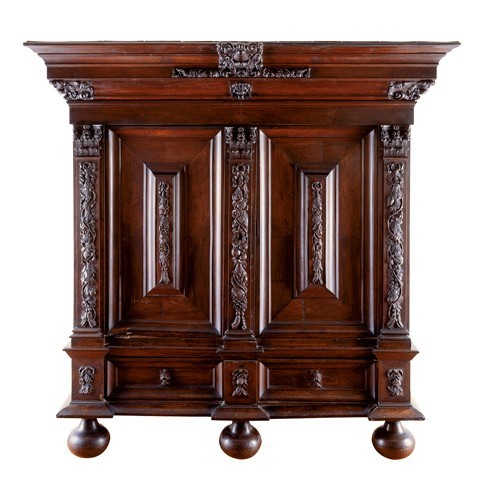
Kast, possibly Rotterdam or Amsterdam, Netherlands, 1680-1690. Walnut veneer on oak. H. 90", W. 89 3/4", D. 31 3/4". (Private collection; photo, Gavin Ashworth.) This elaborate Dutch baroque kast is one of seven owned in New Netherland and colonial New York. It descended in the family of Robert Livingston (fig. 7). His father, Rev. John Livingston (1603-1672), was a Scottish minister active in Scotland's struggle for independence from England. John was exiled to Rotterdam in 1663, where his son Robert was born, reared, and educated. Robert and his wife Alida Schuyler Van Rensselaer (1656-1727) may have purchased this kast after their marriage in 1679. Under the applied moldings on the right side panel is inscribed what appears to be the name "Myndert banta," possibly the maker, along with layout lines for cutting miters in the applied moldings.
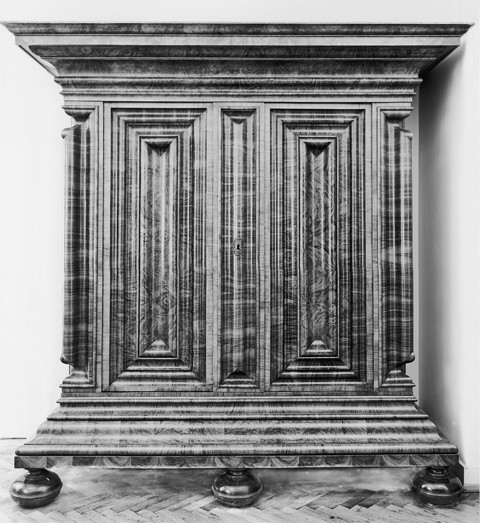
Nasenschränk, Frankfurt, Germany, ca. 1700 (Copyright: Historisches Frankfurt/Main: Photographer: Horst Ziegenfusz.)

Interior view of the schränk illustrated in fig. 3. (Photo, Gavin Ashworth.) Both of the horizontal shelves on the right side are modern, but the cleats for the original shelves are still in place. The schränk illustrated in fig. 4 was originally made with two full-width shelves. It is likely that the patron specified this arrangement since it represents a departure from the norm.
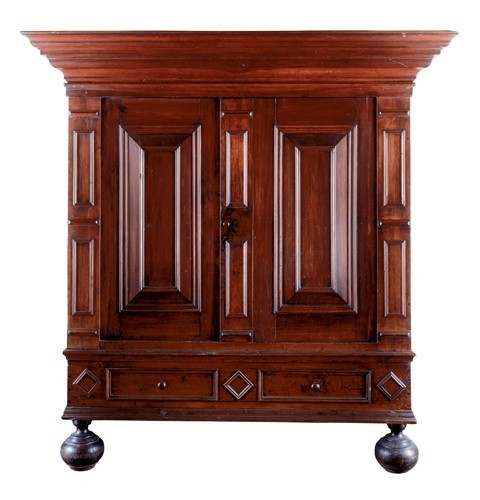
Kast, attributed to the Elting-Beekman shops, Kingston area of Ulster County, New York, 1700-1740. Red gum with white pine. H. 75 1/2", W. 73", D. 25 5/8". (Courtesy, Huguenot Historical Society of New Paltz; photo, Gavin Ashworth.)

Detail of the locking system on the schränk illustrated in fig. 3. (Photo, Gavin Ashworth.) The large faceted end of the through-tenon and the thin wedge at the top lock the cornice substructure to the paneled side. The locking system on the schränk illustrated in fig. 4 is identical except the tenon is elliptical rather than faceted at the top. The individual components of the locking system are coded with the incised Roman numerals I-III and the Arabic numeral 4.
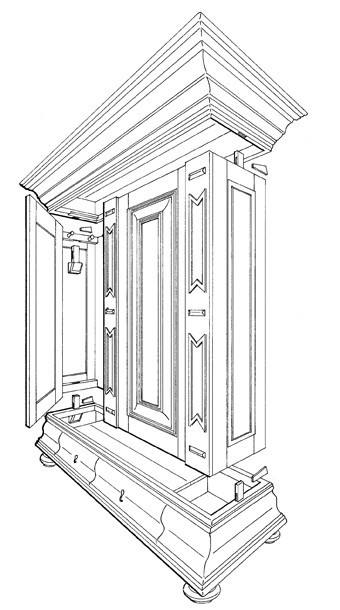
Isometric drawing of the schränk illustrated in fig 3. (Drawing by Dan Kershaw.)
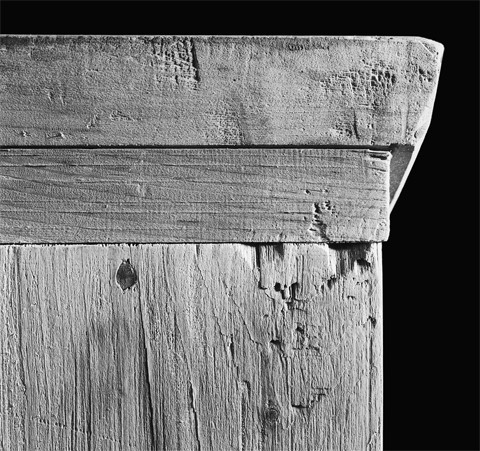
Detail of the drawer bottom of the schränk illustrated in fig. 3. (Photo, Gavin Ashworth). The drawer bottoms of the schränk illustrated in fig. 4 are secured with rosehead nails instead of wooden pins.
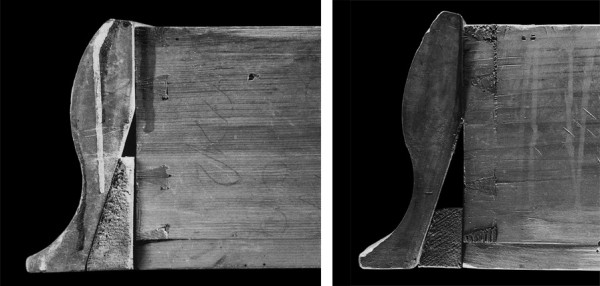
Details showing the (left) wedged dovetails of the schränk illustrated in fig. 4 and (right) unwedged dovetails of the one illustrated in fig. 3. (Photo, Gavin Ashworth.)
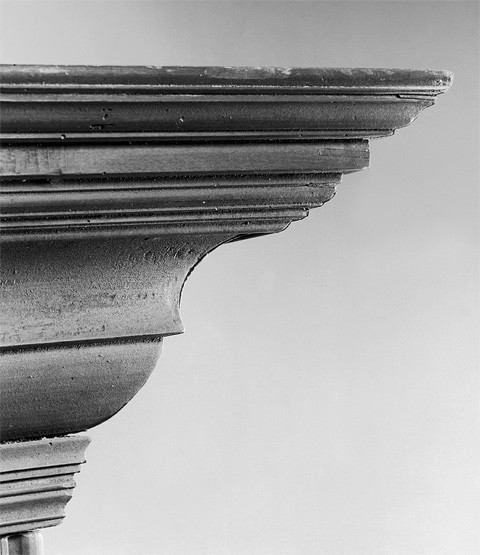
Detail of the cornice and architrave moldings on the schränk illustrated in fig. 3. (Photo, Gavin Ashworth.)
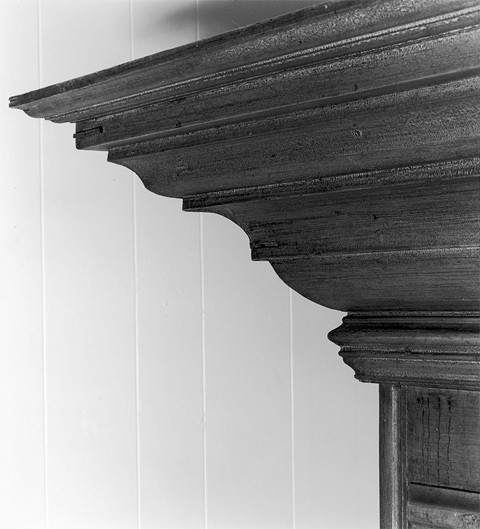
Detail of the cornice and architrave moldings on the schränk illustrated in fig. 4. (Photo, Gavin Ashworth.)
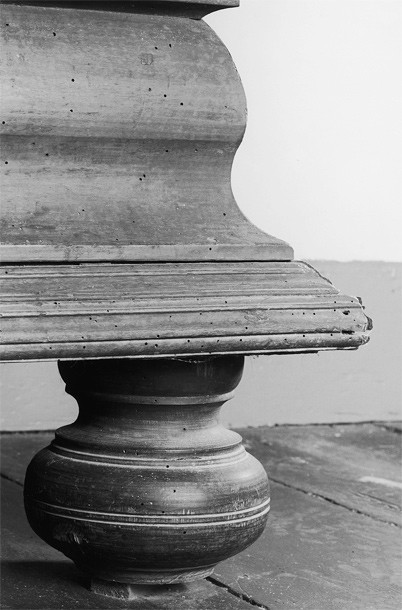
Detail of the foot and base molding on the schränk illustrated in fig. 3. The spline in the front corner has fallen out of the saw kerfs in the miter. The ebonized surface of the turned feet is original, and contrasts with the red-brown paint on the case. (Photo, Gavin Ashworth.)

Detail of the foot and base molding on the schränk illustrated in fig. 4. The original ebonized surface of the feet is visible under the later yellow ochre paint. (Photo, Gavin Ashworth.)
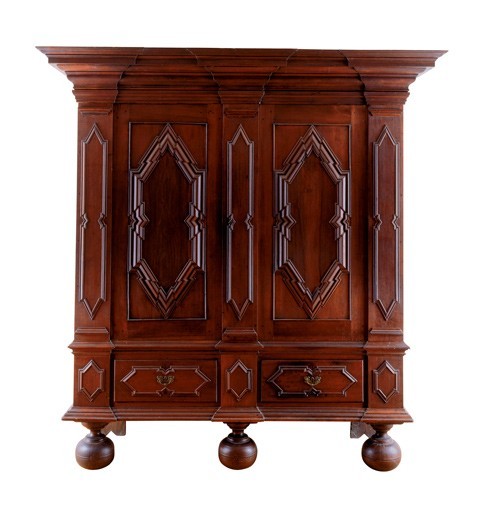
Wiäscheschränk, probably New York City, 1715-1740. Cherry with yellow poplar and red gum. H. 82 3/4", W. 78 1/2", D. 27". (Private collection; photo, Gavin Ashworth.) The drawer handles are replaced. Filled holes and outlines from backplates on the drawer fronts suggest that they may have had baroque brass handles.

Drawings of schränke by (left) J. I. Frantzner and (right) J. A. Beyerle, Mainz, Germany. (Courtesy, Kunstbibliothek, Staatliche Museen zu Berlin.) The Frantzner drawing is dated 1697 and the Beyerle drawing is dated 1708.
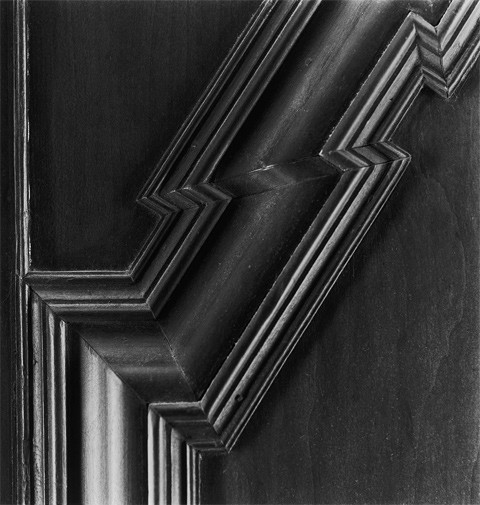
Detail of a door panel of the wäscheschränk illustrated in fig. 21. (Photo, Gavin Ashworth.)
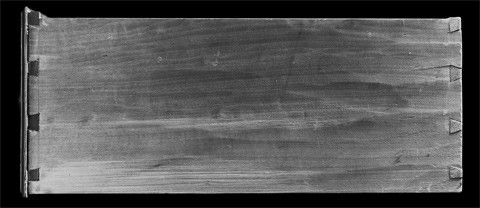
Detail of a drawer from the wäscheschränk illustrated in fig. 21. (Photo, Gavin Ashworth.)
